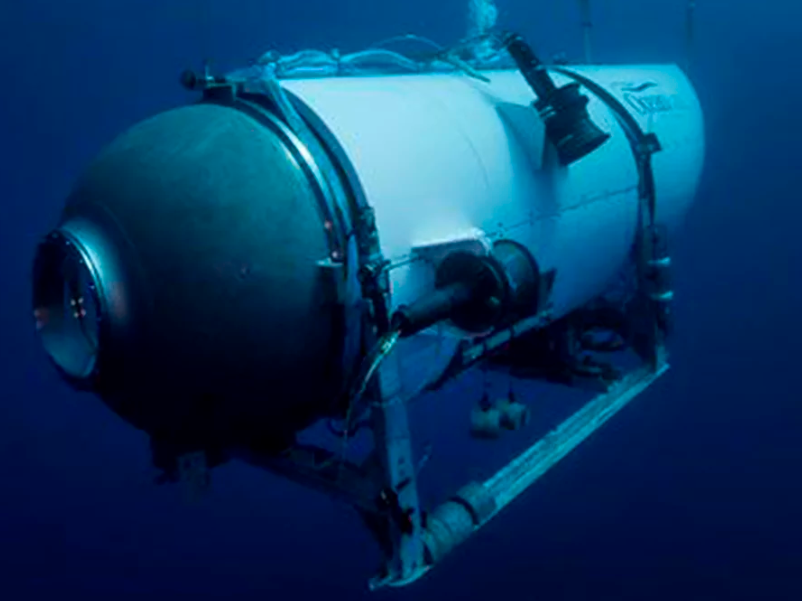
Sign up to unveil the relationship between Wall Street and Washington.
It doesn’t appear the deep-ocean submarine ever reached the Titanic.
A state-of-the-art submersible made from a carbon fiber tube, designed in conjunction with the U.S. National Aeronautics and Space Administration, the University of Washington and Boeing, was “intended to be failsafe.”
Since the loss of OceanGate’s Titan submersible last week (which I didn’t write about at the time, because it felt too soon and too raw), I’ve thought a lot about this. How could we really allow another sea-going vessel, similarly meant to never fail, venture down to see the Titanic, which received the same billing 111 years ago — and fail?
During the herculean rescue effort last week, social media lit up with all kinds of unforgiveable “eat the rich” remarks toward the submarine’s well-heeled inhabitants who paid as much as $250,000 for the trip. I am sure many regretted them and there was a good deal of shame-deleting after the fate of the vessel’s five occupants became known. Late last week the U.S. Coast Guard reported it found remnants of the submersible, which had suffered a “catastrophic implosion.” Such an event would have killed those aboard within 25 milliseconds – far faster than the brain would have been able to process it. To date, no remains have been found.
Among those lost were OceanGate’s chief executive and Titan captain, Stockton Rush; British businessman Hamish Harding; French oceanographer and Titanic expert Paul-Henri Nargeolet; and billionaire British-Pakistani billionaire businessman Shahzada Dawood and his son, 19-year-old Suleman Dawood. (In a heartbreaking postscript, details emerged in the aftermath that Suleman had been very uneasy taking the trip, but ultimately decided to join his father, who had a passion for Titanic history, for the Father’s Day weekend.)
Just around an hour and a half after the deep-sea vessel began its more than 2-mile journey to the wreckage of the Titanic, off the coast of St. John’s, Newfoundland, in Canada, it lost all communication with the surface.
It doesn’t appear the submersible ever reached the Titanic, as Navy sensors detected an implosion or explosion in its acoustic data in the general vicinity of where the Titan was operating when it lost contact. At that point, most experts think the Titan would have been about halfway to three-quarters of the way to its destination, at most.
Five major pieces of the submersible fell within 1,600 feet of the wreckage of the Titanic, discovered by a remotely operated vehicle, allowing the Coast Guard to confirm Titan’s loss. “The debris is consistent with the catastrophic loss of the pressure chamber,” said Rear Adm. John Mauger, commander of the First Coast Guard District. Parts of the submersible found included its tail cone, nose cone and both ends of the pressure hull.
The remnants were found within a wide debris field, which is still being studied and salvaged. An international investigation into what caused the submersible to implode is now underway. The probe includes a group of international agencies and investigators from the U.S., Canada, the U.K. and France. Their goal, according to the Coast Guard, is to prevent a similar occurrence from happening again, with a final report to the International Maritime Organization. Investigators will also be reviewing voice recordings from the mother ship that carried Titan and its five occupants.
In the meantime, reports have emerged that OceanGate not only misrepresented the safety of its submersible, but exaggerated its partnerships with NASA, Boeing and academia.
In fact, the website of Bahamas-based OceanGate Expeditions, to this day, still invites risky adventurers to “join a Titanic expedition” and “explore the world’s most famous shipwreck.” Not unfailable, but unbelievable.
The views expressed in this op-ed are solely those of the author and do not necessarily reflect the opinions or policies of The Daily Upside, its editors, or any affiliated entities. Any information provided herein is for informational purposes only and should not be construed as professional advice. Readers are encouraged to seek independent advice or conduct their own research to form their own opinions.











